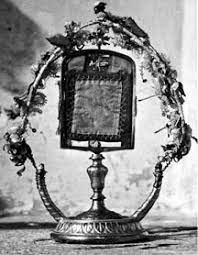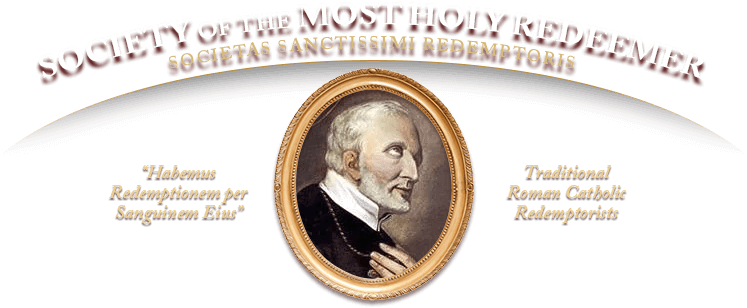
From the St. Andrew Missal (1945):
“According to a pious tradition authorized by the liturgy, on the day of Pentecost a number of men who walked in the footsteps of the holy Prophets Elias and Eliseus, and whom John the Baptist had prepared for the advent of Jesus, embraced the Christian faith, and erected the first church to the Blessed Virgin on Mount Carmel, at the very spot where Elias had seen a cloud arise, a figure of the fecundity of the Mother of God. They were called: Brethren of Blessed Mary of Mount Carmel. These religious came to Europe in the thirteenth century and in 1245 Innocent IV gave his approbation to their rule under the generalship of Simon Stock, an English saint.
“On July 16, 1251, Mary appeared to the fervent servant and placed in his hands the habit which was to be their distinctive sign. Innocent IV blessed this habit and attached to it many privileges, not only for the members of the Order, but also for those who entered the Confraternity of Our Lady of Mount Carmel. By wearing the scapular, which is in smaller form than that of the Carmelite Fathers, they participate in all their merits and may hope to obtain through the Virgin a prompt delivery from purgatory, if they have faithfully observed abstinence, chastity according to their state, and said the prayers prescribed by John XXII, in the Sabbatine bull, published on March 3, 1322. The feast of Our Lady of Mount Carmel, at first celebrated only in the churches of the Order, was extended to all Christendom by Benedict XIII, in 1726.”
St. Alphonsus, a fervent devotee of the Blessed Virgin Mary, faithfully wore the brown Carmelite scapular. He wrote, in The Glories of Mary:
“As men esteem it an honor to have persons who wear their livery, so also is our Blessed Lady pleased that her clients should wear her scapular, as a mark that they have dedicated themselves to her service, and that they are members of the household of the Mother of God.”
Many years after the death of St. Alphonsus, his grave was opened, and although his body and priestly vestments in which he was buried had turned to dust, his brown scapular was found completely intact. His miraculous scapular, pictured above, is exhibited in his monastery in Rome, and is the oldest existing scapular in the world, proving, as Pope Benedict XV once said, the Brown Scapular carries with it grace that is evident even after death.
